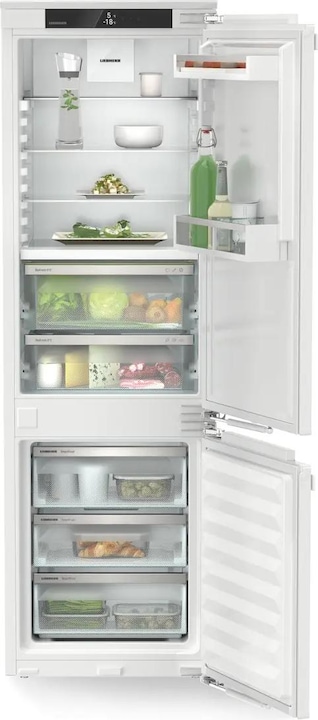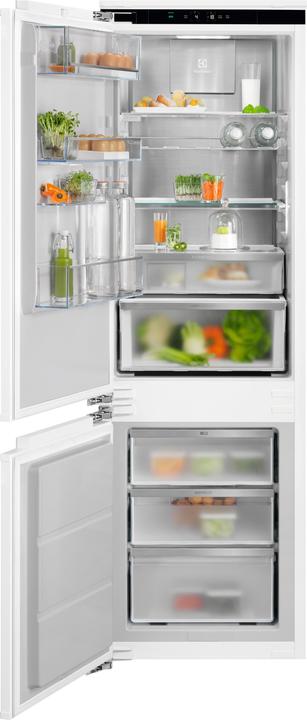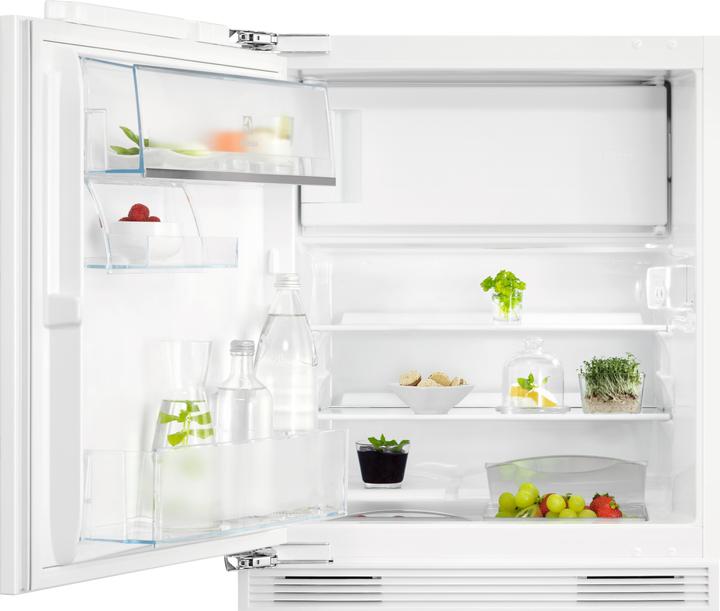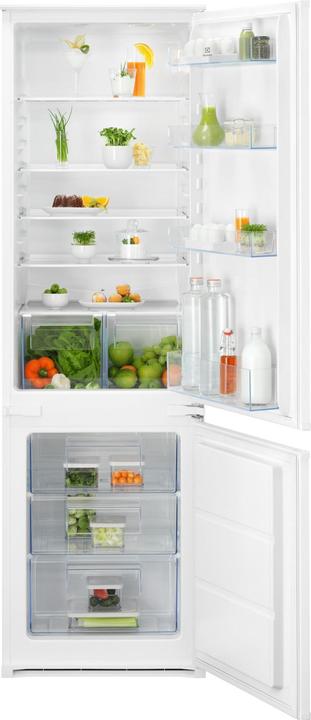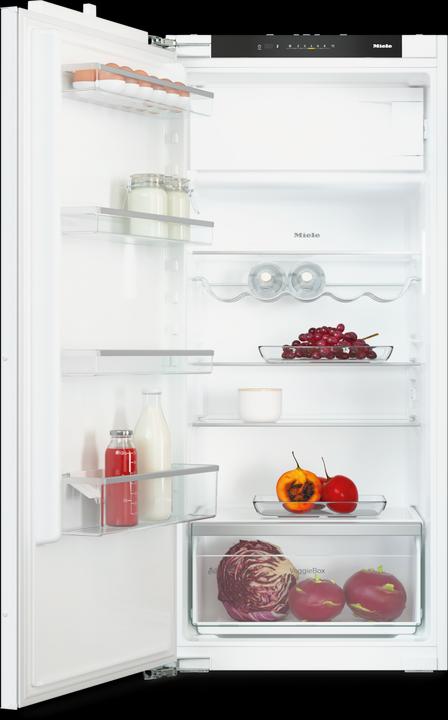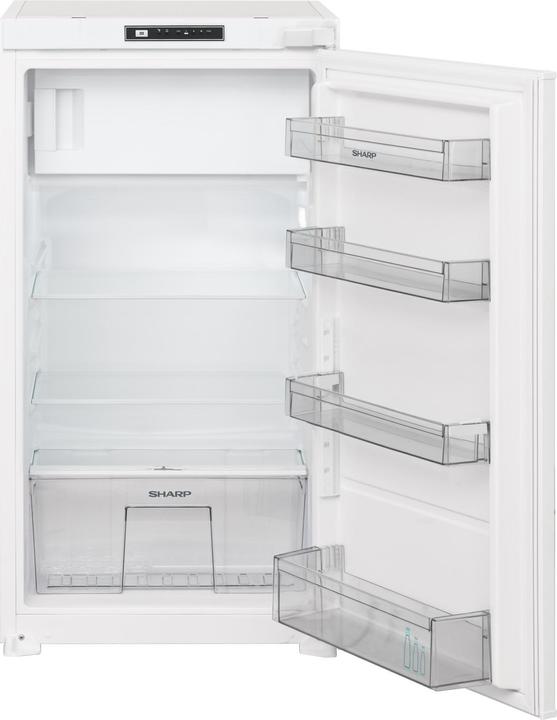
Too Many Built-in Fridges? Here's How to Choose the Right One
Here are five important factors to consider when selecting the perfect built-in fridge.
Last updated 1 week ago. Automatically generated content.
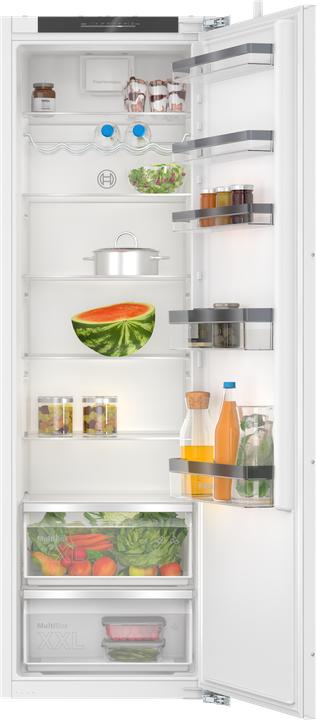

Select options and limit the number of products
Total capacity indicates the storage volume of a built-in fridge, determining how much food and drink it can hold. Choosing the right capacity is important to match your household size and usage habits, ensuring efficient space utilization and energy consumption.
Popular options
Up to 200 l
Typical price
520.– to 940.–Suitable for small households or individuals with limited storage needs.
Compact size helps conserve space and reduce energy usage, making it ideal for small kitchens.
Bestseller
201 - 270 l
Typical price
890.– to 1700.–Balances storage capacity and space, accommodating small to medium families.
Offers more room for groceries while remaining energy efficient, perfect for regular cooking needs.
Bestseller
271 - 350 l
Typical price
1100.– to 2200.–Designed for larger households or those with extensive storage requirements.
Provides ample space for bulk shopping and meal prepping, enhancing convenience and reducing shopping frequency.
Bestseller
Special features in a built-in fridge enhance its functionality and convenience. They can improve food preservation, ease of use, and overall efficiency, making your kitchen experience more enjoyable and efficient.
Popular options (you can select more than one)
Automatic defrost
Automatically melts away frost build-up, preventing ice accumulation.
Reduces maintenance time, ensuring the fridge runs efficiently without manual defrosting.
Bestseller
No Frost System
Prevents ice build-up by circulating dry air, maintaining consistent temperature.
Eliminates the need for manual defrosting, keeping food fresh longer with minimal effort.
Bestseller
Fresh Zone compartment
Dedicated compartment designed to keep fruits and vegetables fresher for longer.
Maintains ideal humidity and temperature, enhancing food quality and reducing waste.
Bestseller
Temperature alarm
Alerts users if the fridge or freezer temperature rises unexpectedly.
Helps prevent food spoilage by notifying you to take corrective action promptly.
Bestseller
Energy efficiency class indicates how much energy a built-in fridge consumes, affecting both electricity bills and environmental impact. Choosing a higher energy efficiency class can lead to significant savings over time and reduce carbon footprints, making it important for both economic and ecological reasons.
Popular options (you can select more than one)
A
Typical price
1300.– to 2200.–Represents the highest level of energy efficiency, ensuring low energy consumption.
Ideal for environmentally conscious buyers, it significantly reduces electricity costs over the fridge's lifespan.
Bestseller
B
Typical price
1800.– to 2400.–Offers good energy efficiency, using more power than class A but still relatively efficient.
A balanced option for those looking to save on energy bills without investing in the highest efficiency class.
Bestseller
C
Typical price
1400.– to 2700.–Provides basic energy efficiency, consuming more energy compared to classes A and B.
Suitable for buyers prioritizing upfront cost savings over long-term energy savings.
Bestseller
Fitting type determines how a built-in fridge is installed and integrated within your kitchen. Choosing the right fitting type ensures a seamless look and optimal use of space, enhancing the kitchen's functionality and aesthetics.
Popular options (you can select more than one)
Fully integratable
Typical price
940.– to 1900.–Designed to be completely hidden behind cabinetry, matching the kitchen's design.
Ideal for those who desire a uniform and cohesive kitchen appearance, blending the fridge with other cabinets.
Bestseller
Integrable
Typical price
610.– to 1400.–Partially visible with a customizable front panel, allowing some integration with cabinet design.
Offers flexibility in design while maintaining easy access to the fridge's controls and features.
Bestseller
Built-under
Typical price
610.– to 840.–Fits under the kitchen counter, optimizing space without sacrificing storage.
Perfect for compact kitchens, providing convenient access and maintaining a clean, open kitchen layout.
Bestseller
Choosing the right brand for a built-in fridge is crucial as it affects durability, energy efficiency, and design integration with kitchen interiors. Brands like Bosch, Electrolux, and Miele offer unique features, with Bosch known for innovative technology, Electrolux for energy efficiency, and Miele for premium quality and longevity.
Popular brands (you can select more than one)
Bosch Hausgeräte
Known for combining advanced technology with user-friendly features.
Offers energy-efficient models that integrate seamlessly into modern kitchens.
Bestseller
Electrolux
Renowned for producing energy-efficient and reliable appliances.
Ideal for eco-conscious consumers seeking sustainable kitchen solutions.
Bestseller
Siemens
Recognized for sleek design and innovative cooling technologies.
Perfect for tech-savvy users who appreciate smart features and connectivity.
Bestseller
Miele
Synonymous with premium quality and exceptional longevity.
Suitable for those prioritizing durability and top-tier performance in kitchen appliances.
Bestseller
Sharp
Focuses on affordability while maintaining essential cooling functionalities.
Great choice for budget-conscious buyers without compromising on quality.
Bestseller




